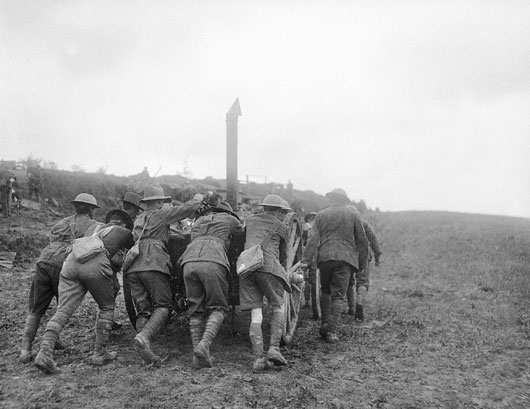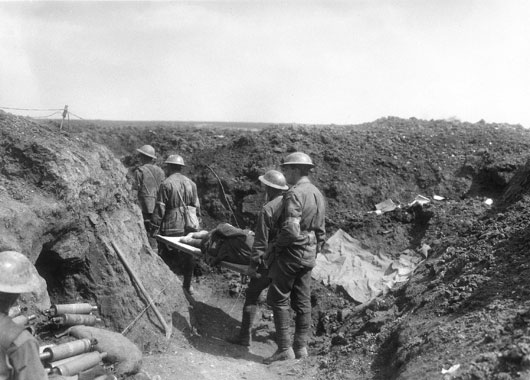Bullecourt Stalemate in the Trenches, 1917
The Battle in Brief
The plan given to Australian commanders for the First Battle of Bullecourt (10-11 April 1917), relied on a "surprise concentration" of tanks that would lead the infantry advance without the support of artillery bombardment. In the event not all the tanks arrived and those that did were quickly knocked out. Amazingly, the Australian infantry broke into the strong defences of the Hindenburg Line, but not surprisingly they were unable to hold their gains. The Australian war correspondent Charles Bean, who was assigned the role of official historian during the war, wrote that,
"Bullecourt, more than any other battle, shook the confidence of Australian soldiers in the capacity of the British command; the errors, especially on April 10th and 11th, were obvious to almost anyone."
The Second Battle of Bullecourt, fought between 3 and 15 May 1917, was a continuation of the British 1917 spring offensive north and south of Arras. The aim of the spring offensive was to support a major attack further south by the French under General Robert Nivelle. As the British had at the opening of the Somme in 1916, Nivelle sought a breakthrough of the German lines followed by swift defeat of the enemy on French soil. The French attacked on 15 April 1917 but failed. However, both British and French leaders agreed to continue operations, one of which was a combined British and Australian attack on the Hindenburg Line around Bullecourt where the Australians had failed so disastrously on 11 April 1917.
The infantry of the Second Australian Division advanced east of Bullecourt village at 3.45 am on 3 May 1917. The left flank, close to Bullecourt, was pinned in the wire but the right and centre, partly sheltered by a half-sunken road, seized and cleared the first two lines of enemy trench. At dusk on 3 May, the Australians held most of its first objective. Only the Canadians in the north and the Australians in the south made any progress on 3 May. The Australians extended their narrow foothold in the Hindenburg Line until it was like a mushroom on its stalk, with the head deep in enemy territory connected by a single long communication track. At dawn on 6 May, after 18 hours of bombardment, the Germans launched their sixth general counter-attack but stubborn defence by Australians prevented any German gain. Part of Bullecourt was seized by the British on 7 May and ten days later all the ruins were in their hands. On 15 May, the Australians fought off a final German counter-attack and the enemy decided to leave this piece of the Hindenburg Line to the Australians.
Location
Media







